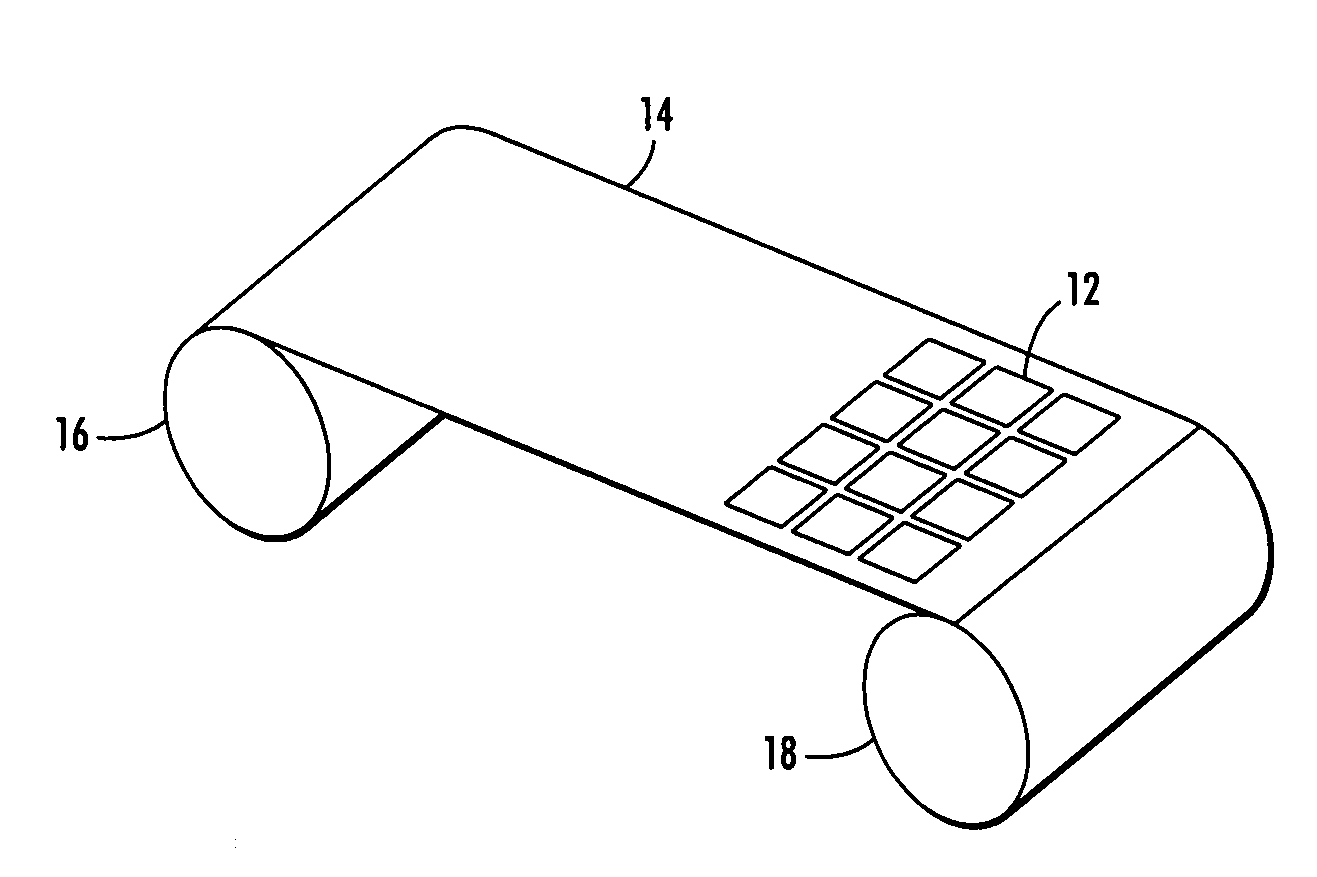Flexible tiled photovoltaic module
a photovoltaic module and flexible technology, applied in pv power plants, climate sustainability, greenhouse gas reduction, etc., can solve the problems of limited material flexibility, limited material flexibility, and inability to meet the actual amount of flexibility of flexible substrates,
- Summary
- Abstract
- Description
- Claims
- Application Information
AI Technical Summary
Benefits of technology
Problems solved by technology
Method used
Image
Examples
Embodiment Construction
Currently, flexible, photovoltaic (PV) modules may be manufactured on flexible substrates such as thin stainless steel or polymer foil combined with thin PV films such as amorphous silicon, copper-indium-gallium-selenide (CIGS) or organic semiconductors. These modules are ‘monolithic’ in that they are manufactured such that they use the flexible substrate as their base layer essentially covering all of it with subsequent layers. The resulting PV modules may not have flexibility in all axes, although they generally are flexible or bendable around one axis.
Further, the materials used to fabricate flexible thin-film photovoltaic cells have less than optimal photovoltaic conversion efficiency. This reduces the usefulness of the modules, and it increases the area coverage required for reaching a particular power output.
In addition to allowing use of the higher performance and higher conversion efficiency solar cells for flexible module integration, embodiments disclosed here allow for mi...
PUM
 Login to View More
Login to View More Abstract
Description
Claims
Application Information
 Login to View More
Login to View More - R&D
- Intellectual Property
- Life Sciences
- Materials
- Tech Scout
- Unparalleled Data Quality
- Higher Quality Content
- 60% Fewer Hallucinations
Browse by: Latest US Patents, China's latest patents, Technical Efficacy Thesaurus, Application Domain, Technology Topic, Popular Technical Reports.
© 2025 PatSnap. All rights reserved.Legal|Privacy policy|Modern Slavery Act Transparency Statement|Sitemap|About US| Contact US: help@patsnap.com



